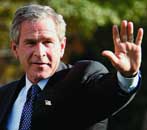E-voting passes election test


President Bush looks forward to a second term after winning a majority of the estimated 115 million votes cast in the 2004 presidential election.
Larry Downing/Reuters
Although some areas reported minor problems associated with activating new e-voting equipment when the polls opened Nov. 2, there appeared to be no widespread problems with performance.
But experts agreed that significant challenges remain. To retain public confidence in e-voting, government must address concerns about security and establish uniform policies and procedures for operating the equipment.
Christopher Baum, vice president for public-sector research at Gartner Inc., a research and consulting firm in Stamford, Conn., said states that made big investments in new electronic equipment systems before the presidential election seemed to have done very well, while states such as Ohio that put off their investments had problems.
"The processes that they used in Ohio for voter registration and vote tallying were not up to the task," he said.
Delaware, Georgia, Maryland and Nevada used direct-recording electronic equipment in every county for the first time in a major election.
The positive experience with new e-voting equipment in the presidential election can be attributed partly to fact that a lot of kinks were worked out earlier this year in the primaries, said Amy Santenello, senior research analyst for government studies with market research and consulting firm Meta Group Inc., Stamford, Conn.
"In the primaries, there were a lot of training and change management issues," she said, but election officials "learned from them and applied them in the presidential election."
One of the biggest e-voting success stories in the presidential race is Nevada, Santenello said. The state mandated that each poll worker undergo three days of training on the new equipment before the election.
Significantly, problems reported with vote counting were associated almost entirely with paper and not electronic ballots.
"The talk is not about miscounting related to e-voting but about how to count paper ballots accurately, which is a great success story for e-voting," Santenello said. "This election will go a long way toward boosting public confidence in the e-voting process."
NEXT STORY: TechToon

